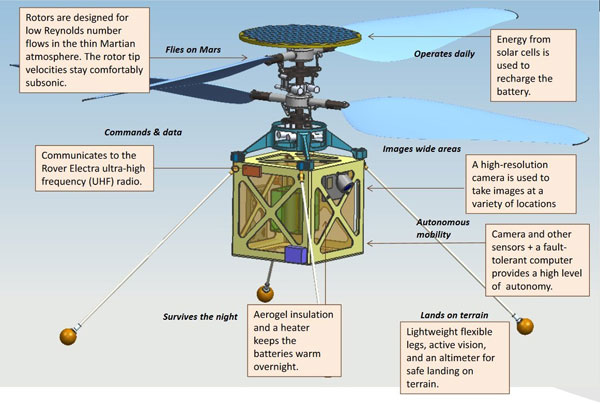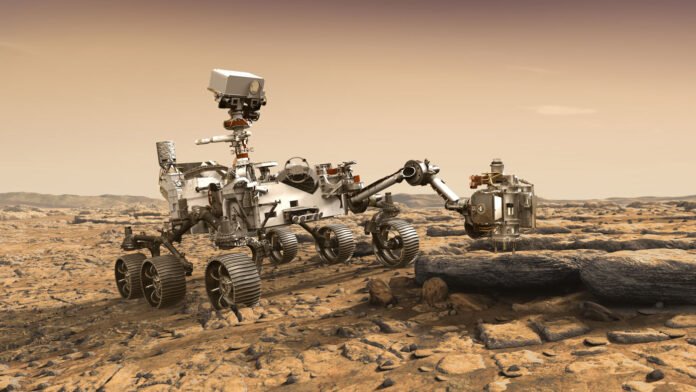Introduction
Space has remained a center of curiosity and mystery for quite a handful of people. Starting from just researching the outer reaches, now we Earthians have now started looking for habitable exoplanets to colonize them in near future.

Thus, climbing step by step towards our Goal, Nasa’s Mars 2020 mission or “Nasa Perseverance Mission” took off from Earth on 30th July 2020 and landed at its destination i.e Mars on 18th February 2021 confirming touch down on Jezero crater on Mars.
What this Mission holds :
Many of us Space geeks have heard about the previous Mars mission of Nasa which provided valuable information of Red Planet. Surprisingly based on those information, scientists came to learn that Red Planet “Mars” once hosted running water and warmer environment that had the potential for microbial life to thrive. Based on this finding, the two vehicles i.e “Perseverance Rover” and Mars Helicopter “Ingenuity” are now tasked with the challenge to search the signs of any potential life that once existed on Mars land and also pave way for future Mars missions.

This information would not only help to learn about the ecosystem of Mars but would also help to build a concrete structure of how we human beings can safely put our first step on Red Planet to start the colonization. So without further delay let’s have a deep look at two Mars travelers i.e Perseverance Rover and Ingenuity Mars Helicopter.
Perseverance Rover :
Mars 2020 rover “Perseverance Rover” is the most crucial part of the mission. It is based on Curiosity Rover configuration which is a car-sized rover. The role of Perseverance Rover is to seek signs of potential ancient life along with collecting rock and soil samples, for a possible return to Earth.

The Rover is about 10 feet long (excluding arms), 7 feet tall (about 3 meters long, 2.7 meters wide, and 2.2 meters tall), and 9 feet wide.
While being a car-sized rover it weighs about 2,260 pounds or (1,025 kilograms) which is less than a compact car and the rover parts are similar to living creatures which it would need to keep it alive and explore.
The table shows the Distribution of parts like a living creature’s anatomy:
| Body | a structure that protects the rover’s “vital organs” |
| Brains | computers to process information |
| Temperature Control | internal heaters, a layer of insulation, and more |
| Neck and Head | a mast for the cameras to give the rover a human-scale view |
| Eyes and Ear | cameras and instruments that give the rover information about its environment |
| Arm and Hand | a way to extend its reach and collect rock samples for study |
| Wheels and Legs | parts for mobility |
| Electrical Power | batteries and power |
| Communication | antennas for “speaking” and “listening” |
Mars Helicopter “Ingenuity”:
Mars Helicopter or “Ingenuity” is a first-ever helicopter designed to arrive on another planet i.e Mars. Ingenuity is a robot copter that is planned to be used as a technology demonstrator to scout the areas of interest of Mars. The small helicopter is being carried at the belly of Perseverance Rover and will take its first flight after 60-days of Rover landing.

As 60 days pass, the robotic rotorcraft is expected to make 5 flights during its 30 days test campaign. With each flight, Ingenuity is expected to fly at altitudes ranging from 3-5m(10-16 feet) with a 90 seconds flight duration each. For each flight, the rotorcraft could travel 50m downrange and then come back to its starting area. Being a test-bed, if successful; Ingenuity could pave way for future aerial missions from Nasa.

The below table shows the flight characteristics of Ingenuity:
| Rotor speed | 2400 rpm |
| Blade tip speed | <0.7 Mach |
| Operational time | 1 to 5 flights within 30 sols |
| Flight time | Up to 90 seconds per flight |
| Maximum range, flight | 50 m (160 ft) |
| Maximum range, radio | 1,000 m (3,300 ft) |
| Maximum altitude | 5 m (16 ft) |
| Maximum speed | Horizontal: 10 m/s (33 ft/s) Vertical: 3 m/s (9.8 ft/s) |
| Battery capacity | 35–40 Wh (130–140 kJ) |
Summary
As the two man-made travelers together mine out the essential knowledge of Mars landscape and environment. The data gathered from these missions will allow scientists to plan future Mars expeditions with more accurate planning that will allow the manned missions to be carried out. Thus mankind will keep advancing forward to a new age of technologies where interstellar travels will not be a dream anymore and we can fulfill the needs of resources to satisfy the growing population.












































